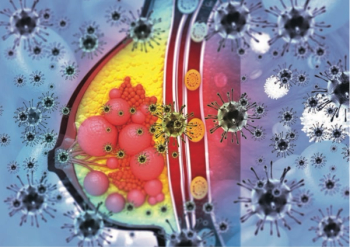
Benjamin Cooper, MD, Examines Rationale Behind Combining TAK-676 With Pembrolizumab After Radiation in Select Solid Tumors
Benjamin Cooper, MD, discussed an ongoing trial examining TAK-676 in combination with pembrolizumab after radiation therapy for patients with non–small cell lung cancer, head and neck cancer, and triple-negative breast cancer.
At the
Transcript:
TAK-676 is a sting agonist that is delivered intravenously. The idea [behind] combining it with pembrolizumab is to reinvigorate the immune system. We’re adding radiation in addition to that at 8 Gy times 3 to generate neoantigens to helpfully allow a systemic response.
This is a phase 1 trial looking at patients with head and neck squamous cell cancer, triple-negative breast cancer, and non–small cell lung cancer. These patients all have progressed on checkpoint inhibition, and this is a phase 1 dose-escalation trial of the TAK-676 molecule. Patients are enrolled after a positive biopsy; they are treated with 8 Gy times 3 to up to 3 sites with the intention of generating new antigens. Over 40 hours later, they’re treated with the checkpoint [inhibitor] pembrolizumab, as well as with TAK-676 and are assessed in 3 weeks cycles.
Reference
Cooper BT, Chmura SJ, Luke JJ, et al. TAK-676 in combination with pembrolizumab after radiation therapy in patients (pts) with advanced non–small cell lung cancer (NSCLC), triple-negative breast cancer (TNBC), or squamous-cell carcinoma of the head and neck (SCCHN): Phase 1 study design. J Clin Oncol. 2022;40(suppl 17): TPS2698. doi: 10.1200/JCO.2022.40.16_suppl.TPS2698
Newsletter
Stay up to date on recent advances in the multidisciplinary approach to cancer.

















































































